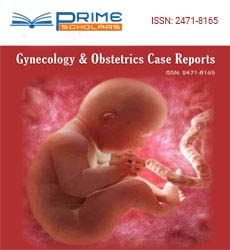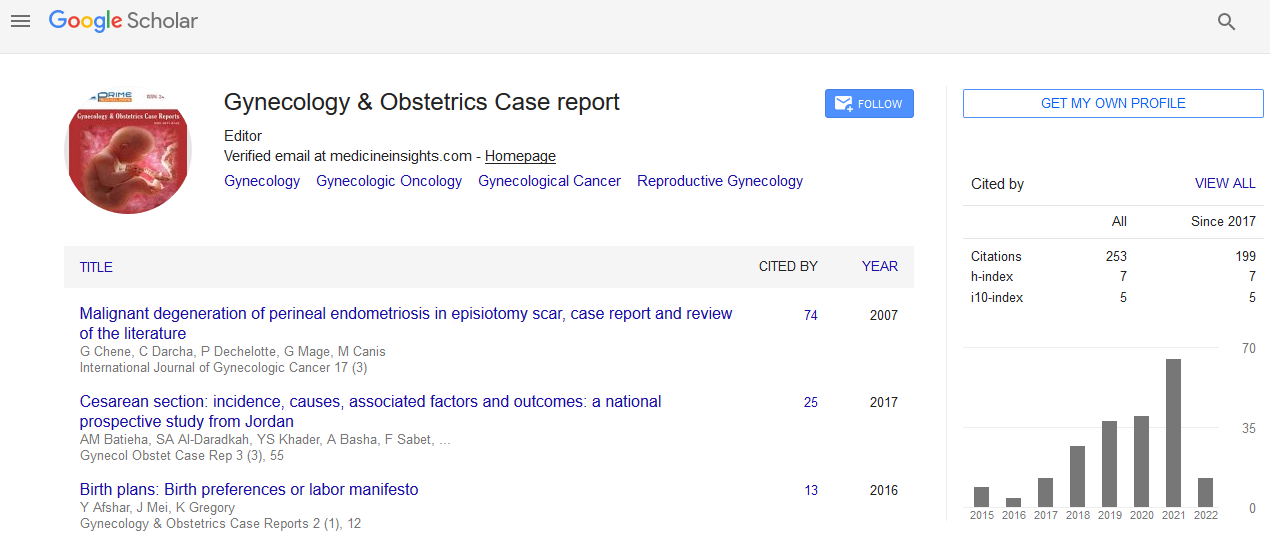Opinion - (2025) Volume 11, Issue 2
HPV and Cervical Cancer: Preventive Strategies and Vaccination Coverage
Willow Naomi*
Department of Obstetrics & Gynecology, University of Michigan, Ann Arbor, MI 48109, United States
*Correspondence:
Willow Naomi, Department of Obstetrics & Gynecology, University of Michigan, Ann Arbor, MI 48109,
United States,
Email:
Received: 24-Feb-2025
Editor assigned: 26-Feb-2025
Reviewed: 10-Mar-2025
Revised: 17-Mar-2025
Published:
24-Mar-2025
INTRODUCTION
Human Papillomavirus (HPV) is a group of viruses that are highly prevalent worldwide, with more than 200 different types identified. Some of these types are known to cause significant health problems, including genital warts and various cancers. Among the most notable of these cancers is cervical cancer, a leading cause of morbidity and mortality among women globally. The relationship between HPV and cervical cancer has been well-established, as persistent infection with high-risk HPV types is the primary cause of cervical cancer. Preventive strategies, particularly vaccination, have emerged as essential tools in reducing the incidence of this cancer, offering a promising approach to combatting this global health burden [1].
HPV infection is common and often goes undetected due to its asymptomatic nature. However, in some cases, the virus persists and can cause abnormal changes in the cervical cells, which may progress to cancer over time. Cervical cancer is one of the few cancers that can be prevented through vaccination and regular screening. The widespread availability of HPV vaccines has provided an opportunity to reduce the risk of cervical cancer significantly. These vaccines are designed to protect against the high-risk HPV types that are most strongly associated with cervical cancer, specifically types 16 and 18. In addition to these, some vaccines also provide protection against other HPV types that can cause genital warts and other cancers, such as anal, vulvar and oropharyngeal cancers [2].
DESCRIPTION
The HPV vaccines have been shown to be highly effective in preventing infections with the targeted HPV types. Studies have demonstrated that the vaccines can reduce the incidence of cervical cancer precursors, such as high-grade cervical lesions and may also reduce the overall incidence of cervical cancer itself. The vaccines are most effective when administered before exposure to the virus, which is why vaccination is typically recommended for adolescents before they become sexually active. In many countries, vaccination programs have targeted girls aged 9 to 14 years, with some also extending coverage to boys. This not only helps prevent cervical cancer but also reduces the transmission of HPV and the associated risk of other HPV-related cancers [3].
While the introduction of HPV vaccines has been a major step forward in cancer prevention, the success of vaccination programs depends on adequate coverage and public acceptance. Vaccine uptake varies widely between countries and regions, influenced by factors such as access to healthcare, public awareness, cultural attitudes and concerns about vaccine safety. In high-income countries, vaccination coverage has generally been good, but in low- and middle-income countries, where the burden of cervical cancer is highest, vaccination rates tend to be lower. To address these disparities, international organizations, governments and health advocates are working together to improve access to the HPV vaccine, particularly in resource-limited settings [4]. In addition to vaccination, regular cervical cancer screening remains a cornerstone of prevention. Pap smears and HPV tests are widely used to detect precancerous changes in the cervix before they progress to cancer. These screening methods have been proven to significantly reduce cervical cancer mortality by detecting abnormalities early, when they are most treatable.
Screening programs, however, are not without their challenges, particularly in low-resource settings where access to healthcare may be limited. As a result, vaccination is considered a more cost-effective and sustainable solution for preventing cervical cancer on a large scale. The prevention of cervical cancer is one of the greatest successes in public health, largely due to the development of the HPV vaccine. By preventing the high-risk HPV types that cause the majority of cervical cancers, vaccination offers a promising strategy to reduce the global burden of this disease. However, to maximize the impact of vaccination, it is crucial to increase coverage and ensure equitable access to the vaccine, particularly in low- and middle-income countries. Alongside vaccination, continued efforts to improve cervical cancer screening and raise public awareness about the importance of prevention will be essential in the global fight against cervical cancer [5].
CONCLUSION
Human Papillomavirus (HPV) is a preventable cause of cervical cancer and advancements in vaccine development and screening programs have significantly transformed cervical cancer prevention. The introduction of the HPV vaccine has dramatically reduced the incidence of the virus in vaccinated populations, offering a promising path toward global elimination of cervical cancer. However, the success of these efforts hinges not only on the availability and efficacy of the vaccine but also on achieving high vaccination coverage and addressing challenges related to public awareness, healthcare access and cultural barriers. Global disparities in vaccine distribution and uptake remain a key concern. Low- and middle-income countries, in particular, face challenges such as limited access to healthcare infrastructure, financial constraints and lack of education on the importance of vaccination and screening. Efforts must be focused on reaching underserved populations and ensuring that the benefits of HPV vaccination and cervical cancer prevention are equitable.
Public health campaigns should aim to raise awareness about HPV, its role in cervical cancer and the importance of both vaccination and regular screening, particularly targeting young people and communities with lower vaccination rates. Furthermore, as vaccination programs continue to expand, it is important to maintain and strengthen cervical cancer screening initiatives, as vaccines alone may not reach all women in time to prevent cancer. Regular screening, combined with vaccination, can provide a more comprehensive approach to cervical cancer prevention.
Acknowledgement
None.
Conflict of Interest
None.
REFERENCES
- Abboud EC, Legare TB, Settle JC, Boubekri AM, Barillo DJ, et al. (2014) Do silver-based wound dressings reduce pain? A prospective study and review of the literature. Burns 40: S40-S47.
Google Scholar Cross Ref Indexed at
- Secretariat, MA (2009) Management of chronic pressure ulcers: An evidence-based analysis. Ont Health Technol Assess Ser 9 (3): 1.
Google Scholar Indexed at
- Vermeulen H, van Hattem JM, Stormâ?Versloot MN, Ubbink DT, Westerbos SJ, et al. (2007) Topical silver for treating infected wounds. Cochrane Database Syst Rev 1: CD005486.
Google Scholar Cross Ref Indexed at
- Meekul J, Chotirosniramit A, Himakalasa W, Orrapin S, Wongthanee A, et al. (2017) A randomized controlled trial on the outcome in comparing an alginate silver dressing with a conventional treatment of a necrotizing fasciitis wound. Int J Low Extrem Wounds 16(2): 108-113.
Google Scholar Cross Ref Indexed at
- O'Meara S, Alâ?Kurdi D, Ologun Y, Ovington LG, Martynâ?St James M, et al. (2014) Antibiotics and antiseptics for venous leg ulcers. Cochrane Database Syst Rev 1: CD003557.
Google Scholar Cross Ref Indexed at
Citation: Citation: Naomi W. (2025) HPV and Cervical Cancer: Preventive Strategies and Vaccination Coverage. Gynecol Obstet
Case Rep. Vol.11 No.2:16.
Copyright: Copyright: © Naomi W. This is an open-access article distributed under the terms of the Creative Commons AttributionLicense,
which permits unrestricted use, distribution and reproduction in any medium, provided the original author and source are
credited.

